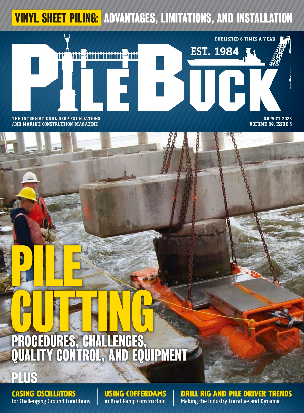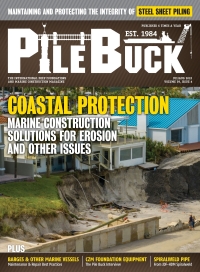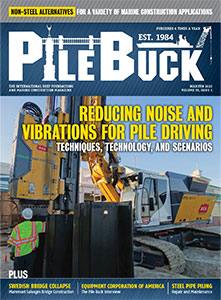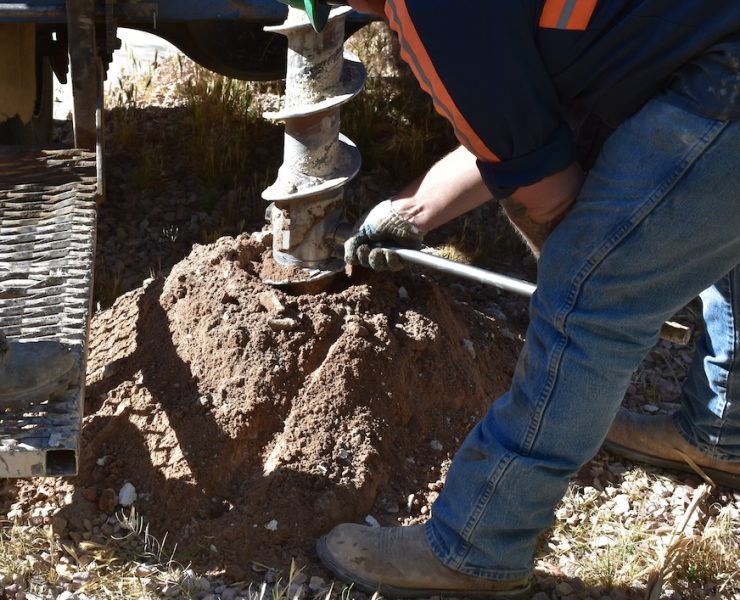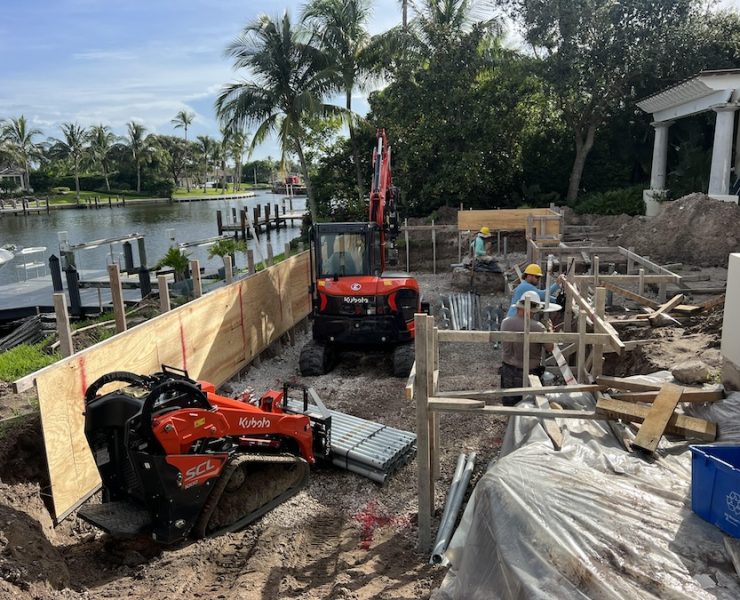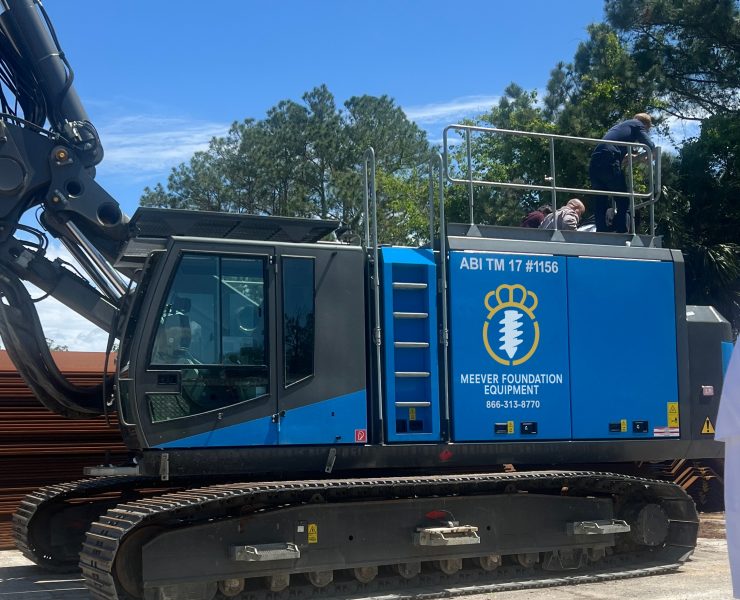Test Methods for Driven Piles
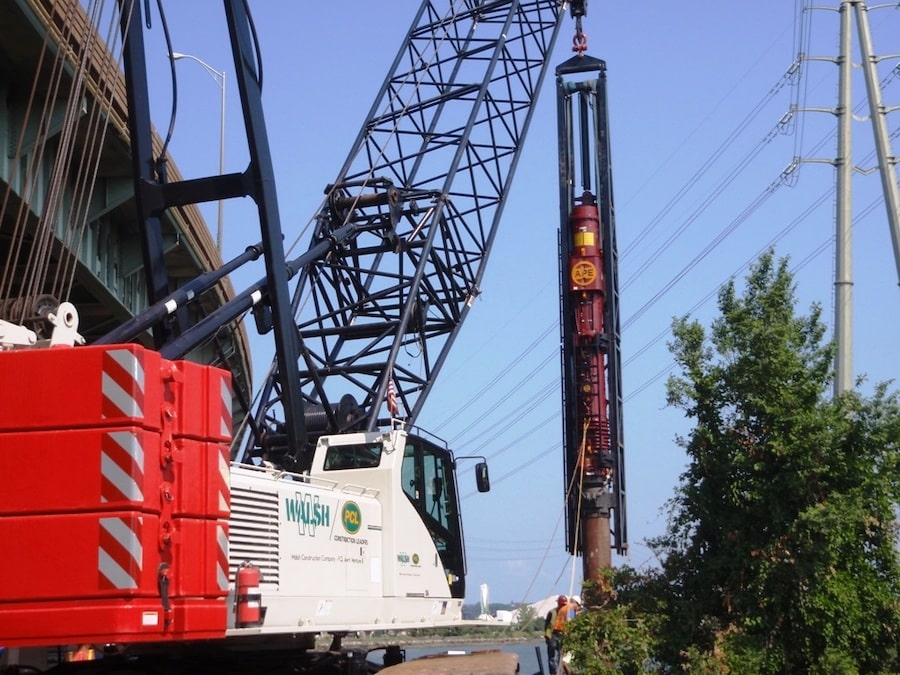

A variety of high- and low-strain load test procedures exist to determine the suitability of pile-soil systems for proposed pile design loads. The following article provides deep foundation contractors with a load test overview that discusses implementation and the differing methods commonly utilized.
Conducting Load Tests
All forms of load tests should be conducted after a site is prepared and made accessible, and not interfere with construction. A contractor must wait for findings before equipment and materials can be delivered to a project site.
Plans and technical specifications for a pile test should include:
- The type, size, length, and location of tested piles
- The size and capacity of pile driving equipment
- Driving criteria
- Any special installation methods
- The types of tests to be conducted
- Necessary maximum testing capacities
- Testing equipment and instrumentation to be utilized
- Testing procedures
- Load test data to be recorded
- Additional test provisions
- Schedule of payment and bid items
Load tests are typically conducted with hydraulic jacks and load cells.
The hydraulic jack and the load cell should both feature a spherical head and be calibrated by a qualified individual. The jack and cells should also be read, compared, and continually monitored throughout testing in order to ensure a load increment is being maintained at a constant value.
Driving Test Piles
Prior to driving, a contractor must determine the criteria for stopping a test pile and make arrangements to concrete the pile within two hours of driving.
Recommendations for driving test piles include:
- Prepare a driving log for each test pile
- Mark every foot of the test pile with a paint stick prior to lifting it
- Record the penetration under the weight of the hammer and core
- Record the number of blows per foot
- Maintain adequate steam, air, or hydraulic pressure during driving
- When driving concrete piles, ensure the mix begins
- Prepare a minimum of six test cylinders at the time of pouring
- When using precast piles, avoid handling or driving them until the concrete has developed the required strength
Load Test Procedures
A trio of methods are commonly used when applying loads to test piles.
Jacking against reaction piles is the most economical method, with the load in these piles limited to 25 to 50 percent of the test pile’s load. Reaction piles must be located a minimum of five feet from the tested pile, with provisions made to detect any upward movement. For modest loads, wood reaction piles cabled together, with a test beam running below the cables, should be considered.
Jacking against a dead load platform represents another preferred method, so long as an adequate amount of dead load is available. To avoid tipping, contractors must allow for at least 15 percent of additional dead load over the required load.
Applying a dead load directly to a pile was at one time a commonly used method. This option is still applicable in situations where the total load is moderate, with the load applied once and then removed.
Methods aside, these procedures should be followed when applying a load to test piles:
- Cut pile heads off at the proper elevation
- Cap piles with a steel plate which is strong enough to transfer the load
- Level the steel plate, grouting it to the head of a concrete pile or welding it to a steel pile’s head
- Make provisions for determining or measuring load increments
- Inspect hydraulic lines for leaks before testing
- Maintain hydraulic pressure overnight when utilizing the jacking method
- Connect jacks to a common manifold, if utilizing more than one
- Separate driving and testing operations by three to five days
- Load and unload piles according to specified timing
- Be detailed when recording data
When measuring the settlement of a test pile, it is recommended that two independent systems be utilized, as measurement systems are frequently damaged. Contractors typically utilize a surveyor’s level, dial gauges, or a mirror with a mounted steel machinist scale.
Types of Load Tests
Standard: This common test applies a load at increments of 25 percent of the design load. The applied load is held until the rate of settlement is constant at less than 0.01” per hour for up to two hours. Additional increments are then applied until twice the design load is reached. The load is then removed at increments of 50, 100, and 200 percent of the design load.
To evaluate the ultimate pile capacity of a design load, reloading the pile in increments of 50 percent until the maximum load is reached is recommended. Loads can then be added at 10 percent increments until failure or the capacity of the equipment is reached. This procedure can exceed 70 hours.
Static: Known for providing accurate measurements, this test processes how a deep foundation reacts to an applied load. This method can provide significant project cost savings and is frequently utilized in the design of major structures where a host of differently sized piles are installed.
Types of conventional static load tests include axial compressive, axial tensile, and lateral loading.
While static load tests allow for a more rational foundation design and use a lower factor of safety, the costs associated with conducting them can be a hindrance. Additionally, if conducted during the design phase of a project, delays can result.
Axial Compressive: Known as a quick and simple method, this test is recommended on highway projects, and requires that a test load of 300 percent of the design load be applied in 10 to 15 percent increments. After a load is added, it is maintained constantly for nearly three minutes prior to the next increment.
Typically, the test takes three to five hours, but it can be performed in several hours under certain circumstances. Because of its quickness, the test may not provide necessary time for soils or clays to consolidate, which can result in the settlement of these soils being underestimated.
Constant Rate of Penetration: In this test, the load applied causes the pile head to settle at a predetermined, constant rate – typically 0.01” to 0.1” per minute.
Like an axial compressive test, this procedure can be conducted in less than one working day. Note that ordinary pumps used for standard load tests are difficult to utilize when conducting this type of procedure.
Tension: This load test provides data on piles that function in tension or tension and compression. Following installation, a. In cohesive soils, the waiting period should be a minimum of 14 days.
This procedure allows for a direct comparison of tension and compression on the same underground profile;
Tensile: Utilized for pile groups that are subjected to , this load test determines uplift capacities of piles by loading the pile in tension. Determining pile uplift has in importance as engineers and contractors place a larger focus on seismic design.
Tensile loads are typically applied by centering a hydraulic jack on top of a test beam. The jack moves against a reaction frame that’s connected to the pile, with the test beam supported by piles or cribbing. A quick loading tensile test requires that a load be applied in increments of 10 to 15 percent, with a time interval of more than two minutes.
Lateral: Commonly conducted on projects where seismic and vessel impacts exist, this applies a lateral load via a hydraulic jack, which acts against a reaction system. A hydraulic jack acting between two piles can also apply a lateral load.
The typical loading procedure requires the total test load be 200 percent of the proposed lateral design. Differing load increments are applied with the magnitude of the increment decreasing. Upon completion, the pile is unloaded in four load decrements equal to 25 percent of the maximum load. Each decrement occurs an hour apart from the others.
Statnamic: An alternative procedure that attempts to avoid aspects of static load testing, S testing applies to driven piles and cast-in-place piles that are submitted to lower stresses than in other dynamic testing, which reduces the possibility of pile damage. The testing device features a pressure chamber and reaction mass.
Dynamic Pile: This procedure measures the static axial compressive pile capacity from pile strain and acceleration. Dynamic pile testing is conducted in unison with either the Wave Equation Analysis of Piles Computer Program or the Case Pile Wave Analysis Program.
A common dynamic test features at least two strain transducers and two accelerometers, which are bolted to opposite sides of the pile. Test piles are typically driven in advance of production driving, allowing for the information obtained to be used in establishing driving criteria and pile lengths.
Low Strain: Used to determine pile length or the integrity of piles with high impedance, low-strain methods can test many piles in one day. Of note, this procedure is not used for steel H-piles or non-concrete pipe piles.
Primarily, two low-strain methods are utilized: pulse echo pile testing and the transient response method.
The pulse echo method applies a low-strain impact, via a handheld hammer, to the head of a pile and monitors the resulting response. A temporarily attached accelerometer records the response as the low-strain stress wave moves down the pile length.
The transient response method measures both the pile head response and the impact force. Like the pulse echo method, a handheld hammer can produce the necessary frequency.
A Foundation for Design Loads
Overall, contractors’ understandings of and experiences conducting various load test procedures will better enable them to provide useful input regarding a project’s designed pile-soil system.
Regardless of the testing method selected, all contractors must weigh the costs of performing such procedures against the possible benefits, i.e. project cost savings. Lastly, the decision to perform a load test must be made well in advance of design or construction, as opting to perform such a procedure at the last minute will equate to notable project delays.
What are the general steps or information for testing of Driven piles?
Contractor should prepare driving log, mark every foot of the test pile, record penetration/number of blows, measure air/steam pressure. Technical specification of pile test should include the detail of pile, details of pile driving equipment, driving information, method, procedure of test.
What are different types of load tests available for driven pile?
Standard, static, axial compressive, constant rate of penetration, tension, tensile, lateral, statnamic, low strain and dynamic.










